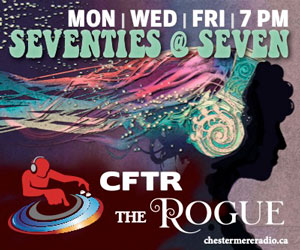Always looking for a reason for a night out, I put on my finest duds to celebrate the tenth annual Gin & Tonic Day last week.
Ahhh… the old G & T. Possibly the classiest of all the cocktails. I went out to one of those 1920s speakeasy themed cocktail bars in Calgary with a few regular drinking companions, all dressed in our best Roaring Twenties outfits, and sipped Gin & Tonics while listening to the smoothest of jazz records.
I was surprised by the near-absence of the big names in Gin at the local cocktail bars. Not a single Bombay Sapphire or Tanqueray to be found, with all the shelf space behind the bar reserved for crafty Alberta Gins.
Not that I have a problem with the giant industrial Gin producers of the world, as they were my gateway spirits in the days of my squandered youth, as my palate matured from the generic brand of bar vodka served up from a squirt gun wielded by surly bartenders of that decade of decadence known as the 80s, era of many regrettable fashion choices that thankfully disappeared before the dawn of social media.
I can recall the very first time I ordered a G & T instead of my generic vodka & 7up highball, and learned that spirits could indeed have a flavour other than that of the mixer.
That G & T marked the first step in a long journey of discovery into the world of tipples, from the different styles of Gin, into the mysterious realms of single malt Scotch and other whiskies, to a brief dalliance with sweet liqueurs, and too many others to count.
There are more than a dozen craft distillers producing Gin right here in Alberta, and the granddaddy of them all is the Eau Claire Distillery in Turner Valley, which opened its doors back in 2014, and is still the most popular Gin in our fair province.
For those new to Gin, its defining characteristic is the infusion of juniper berries after the initial distillation, along with whatever secret blend of botanicals the master distiller considers their signature.
Here in Alberta, most of our gin starts out as a neutral spirit, usually from locally grown wheat or barley. Most craft distilleries will produce both a Vodka and a Gin, and both spirits will often use the same grain bill.
After the initial distillation, the spirit is infused with juniper and other botanicals for 24 hours or so, then filtered and bottled. Adventurous tipplers will sometimes even make their own Gin by sourcing their own blend of botanicals and soaking them in a bottle of Vodka overnight.
On a recent trip to Banff, I spent a leisurely afternoon in the Park Distillery, enjoying the vittles from the restaurant, as well as sampling their range of Gin bottlings.
My favourite was the Alpine Dry Gin, made with Alberta grown grains, and flavoured with locally foraged botanicals, including Spruce Tips for a finish that tastes like the Rocky Mountain in a glass.
Another unique offering from the Park Distillery is their Barrel Aged Gin, aged for six months in ex-Bourbon casks for a golden tint and notes of vanilla and oak. It is uncommon for Gin to be aged in oak barrels, so it was a delightful surprise to encounter for the first time.
We are experiencing a distilling renaissance in Alberta, with dozens of craft distillers already in operation, and many more working through the construction and permitting processes. Interestingly, many distilleries are opening outside of the big cities, with Canmore and Okotoks both boasting multiple craft distillers, and Lacombe and Innisfail not far behind.
The last time Gin cocktails were this popular, ladies were wearing flapper dresses and gentlemen wore fedoras and 3-piece suits every waking hour, at work or at play, looking equally dapper at the illegal speakeasy during Prohibition as they did mowing the lawn in their fancy duds.
The 2020s promise to be more casual than the 1920s, but you can still enjoy some smooth jazz with your Gin & Tonic, and the yoga pants will our generation’s version of the flapper dress! Pick up a bottle of locally produced Gin at your favourite bottle shop, or order a cocktail from your favourite bartender.








